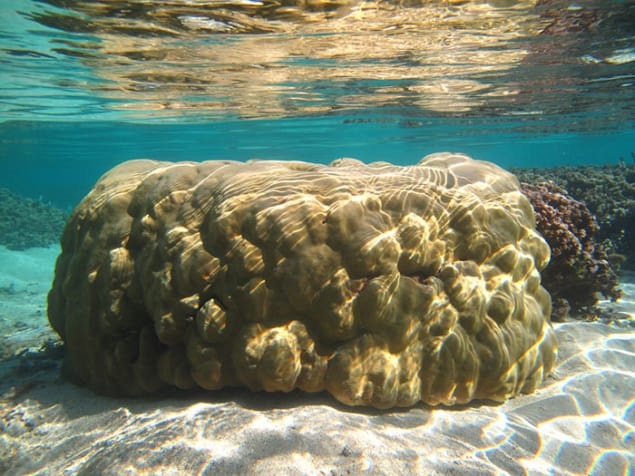
Coral reefs are under a barrage of threats. Ocean acidification alone could decrease the density of coral skeletons by up to 20%, with reefs close to the equator affected most.
Declines in coral skeletal density could have wide-reaching impacts on reef structure. Reefs are a natural coastal defence, shielding coastlines from storms by dissipating much of their energy. But “less dense skeletons will provide a weaker barrier,” said Nathan Mollica of Massachusetts Institute of Technology, US.
Such a decline could also render reefs more vulnerable to erosion. “There is some evidence that a lower density skeleton may be more easily bored into by bio-eroding organisms,” said Mollica, suggesting there may be wider implications for reef health.
The study, published in PNAS, showed that reefs in the coral triangle – a diversity hotspot in the western Pacific – are likely to be most at risk. Large increases in seawater acidity are predicted for this region. In areas that experience only small changes in acidity, coral skeletons could well stay strong.
Ocean acidification reduces the availability of the carbonate ions that corals need to grow. However, studies of coral growth in acidified environments in the lab and field have yielded mixed results, making it hard to predict how corals will respond to future change. The answer, it seems, lies in understanding the different ways that these organisms grow.
Corals develop in two ways: by extending outwards at the edges, and by thickening bundles of existing crystals to make the coral skeleton denser. This thickening is vulnerable to ocean acidification.
Scientists believe that corals have more control over their outwards growth than the thickening of their central skeleton. As these areas are under less control, they may be more susceptible to changes in seawater chemistry.

By separating the two key components of coral growth, the team simulated how coral skeletons will change by the end of the century, validating their model with reef data from around the world.
Many studies have seen a relationship between seawater chemistry and skeletal growth. “Our model builds on that by allowing us not only to predict how corals will respond to [acidification], but put a number on it which is really valuable when making long term predictions,” said Mollica.
Currently, the model works best for Porites, a stony coral that dominates tropical reefs around the world. With some calibration it could apply to other taxa, allowing researchers to unpack the impact of ocean acidification on other corals.
“The future for coral reefs is certainly scary but all is not lost,” said Anne Cohen of Woods Hole Oceanographic Institute, US. “We have to continue to work hard to stabilize and even reduce carbon dioxide in the atmosphere and in the meantime take very good care of our reefs to optimize their ability to deal with the coming changes.”



